Table of Contents[Hide][Show]
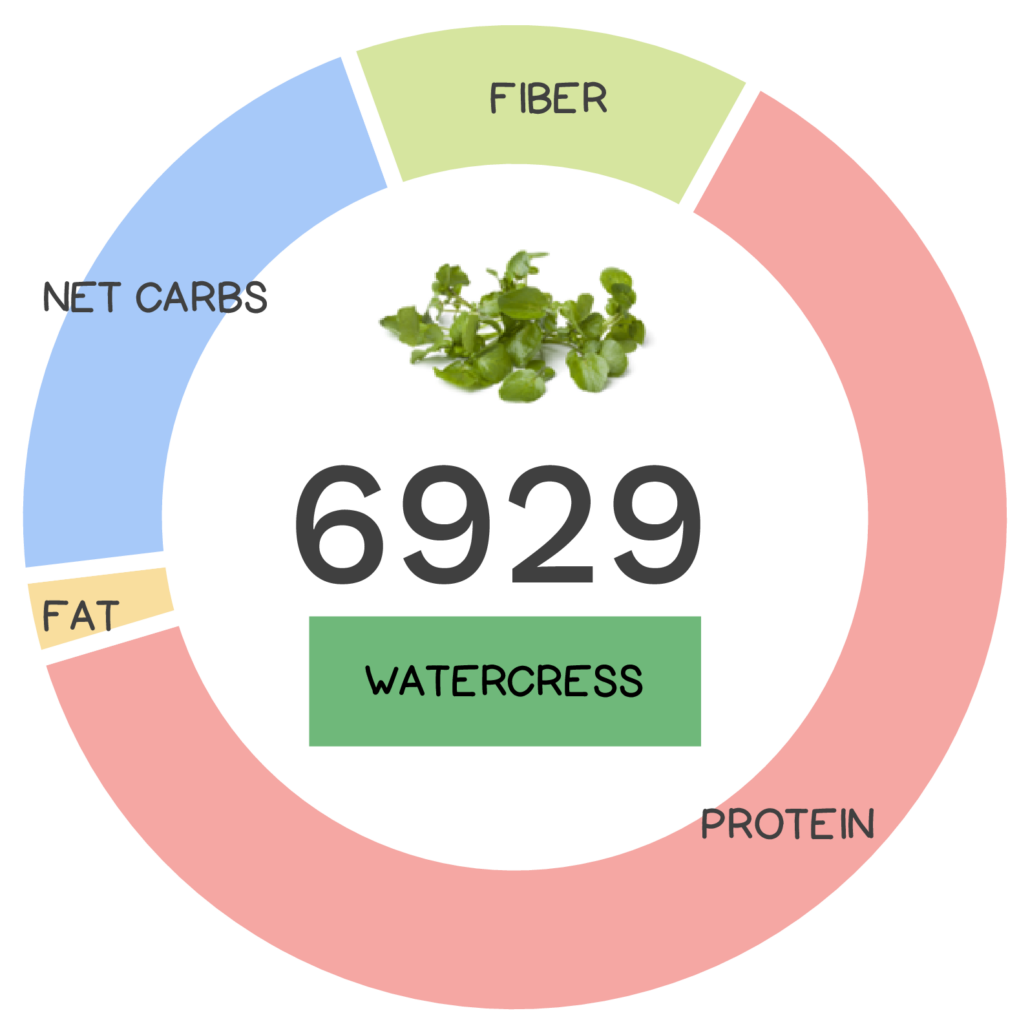
Watercress is one of those veggies that you may have heard of but are not very familiar with. Perhaps you know that cucumber-watercress sandwiches are a staple during traditional tea time, but that’s where your knowledge ends. If you’re looking to “in-cress” (hyuck!) your knowledge about this unique vegetable, you’ve come to the right place! I won’t “water down” any of the details (double hyuck!)
Watercress is one of the oldest known leafy greens consumed by humans!
Watercress, Nasturtium officinale, is a rapidly growing aquatic (or semi-aquatic) perennial, leafy green in the same cruciferous vegetable plant family as kale, broccoli, Brussels sprouts, cauliflower and cabbage. In fact, it is one of the oldest known leafy greens consumed by humans!
Watercress is a spicy, slightly bitter green, with a peppery or tangy flavor and is related to mustard, radish, and wasabi.
Throughout history, it has been used in traditional medicine across many cultures and it is purported that Hippocrates selected the location for his first hospital because of its proximity to a stream where watercress grew. This plant is native to Europe and Asia, though now commonly grows throughout the world. Watercress is a spicy, slightly bitter green, with a peppery or tangy flavor and is related to mustard, radish, and wasabi. The word nasturtium comes from Latin “nasus tortus” literally meaning twisted nose, referring to the contortions the human nose goes through because of its sharp, peppery smell! While the word officinale indicates that the plant was accepted as an official herb that could be bought in a pharmacy for its medicinal properties. Watercress naturally occurs along gently flowing streams, brooks, ditches, ponds or on marshy ground. The first commercial cultivation of watercress was recorded in Southern England in 1808.
Learn What Foods to *ADD* to Your Diet
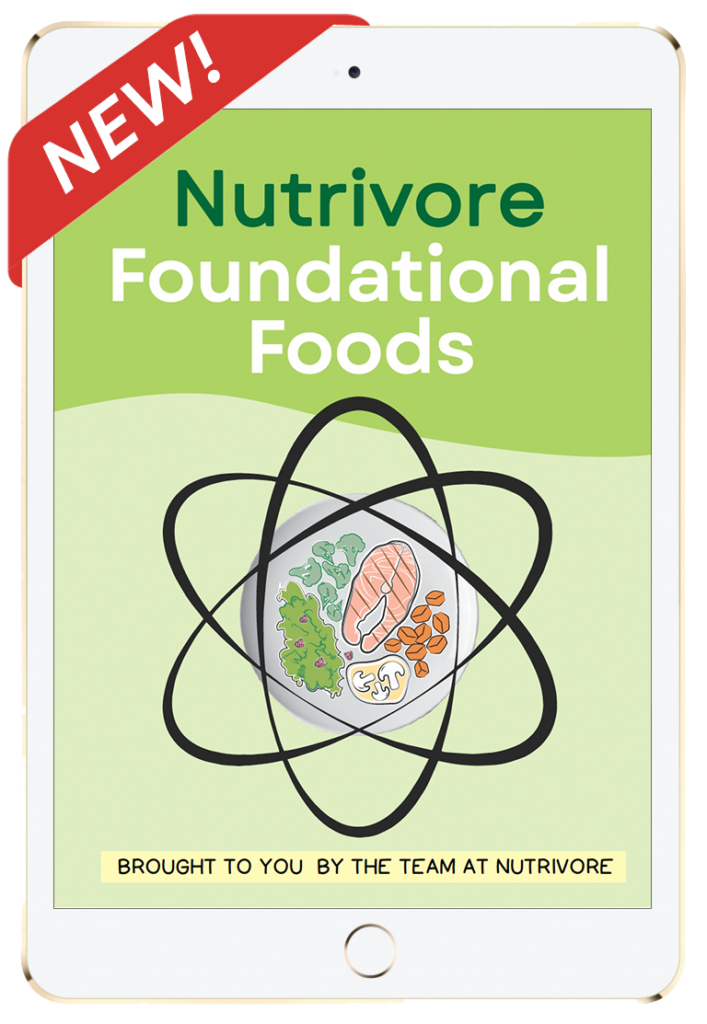
Nutrivore Foundational Foods
Learn what makes the 12 Nutrivore foundational food families nutritionally unique, their health benefits, which options are the most nutrient dense, how much of them to eat, plus various fun facts, practical pointers, and busting of common myths.
This very helpful resource will introduce you to new foods and expand your nutrition knowledge, making food choices easier!
Buy now for instant digital access.
Nutrivore Score for Watercress – 6929
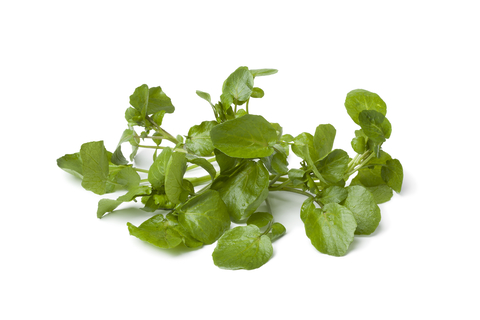
Watercress has a Nutrivore Score of 6929, making it a super nutrient-dense food! Plus, it is a low-carb and low-calorie-density food; amazingly the calorie count of watercress is only 3.5 calories per cup!
Per serving, watercress is a best source (>50% daily value) of carotenoids, glucosinolates, polyphenols, and vitamin K; an excellent source (20-50% daily value) of vitamin C; and a good source (10-20% daily value) of vitamin A.
Ditch Diets. Embrace Nutrients. Start with this FREE Guide.
Sign up for the free Nutrivore Newsletter, your weekly, science-backed guide to improving health through nutrient-rich foods — without dieting harder —and get the Beginner’s Guide to Nutrivore delivered straight to your inbox!

Watercress Nutrition Facts
One serving of watercress is standardized to 2 cups or about 68 grams (2.4 ounces).
Watercress Nutrition Facts Per Serving
| Watercress, raw | Nutrivore Score: 6929 | Nutrient Density: Super! |
|---|---|---|
| Serving Size: 2 cups (68 grams) | Protein: 1.6 grams | Net Carbohydrates: 0.5 grams |
| Calories: 7 | Total Fat: 0.1 grams | Dietary Fiber: 0.3 grams |
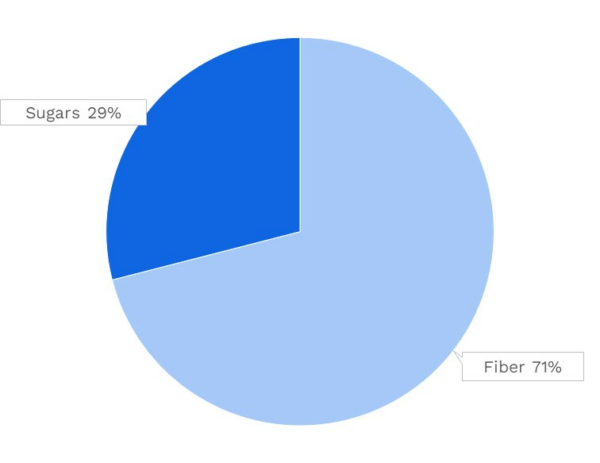
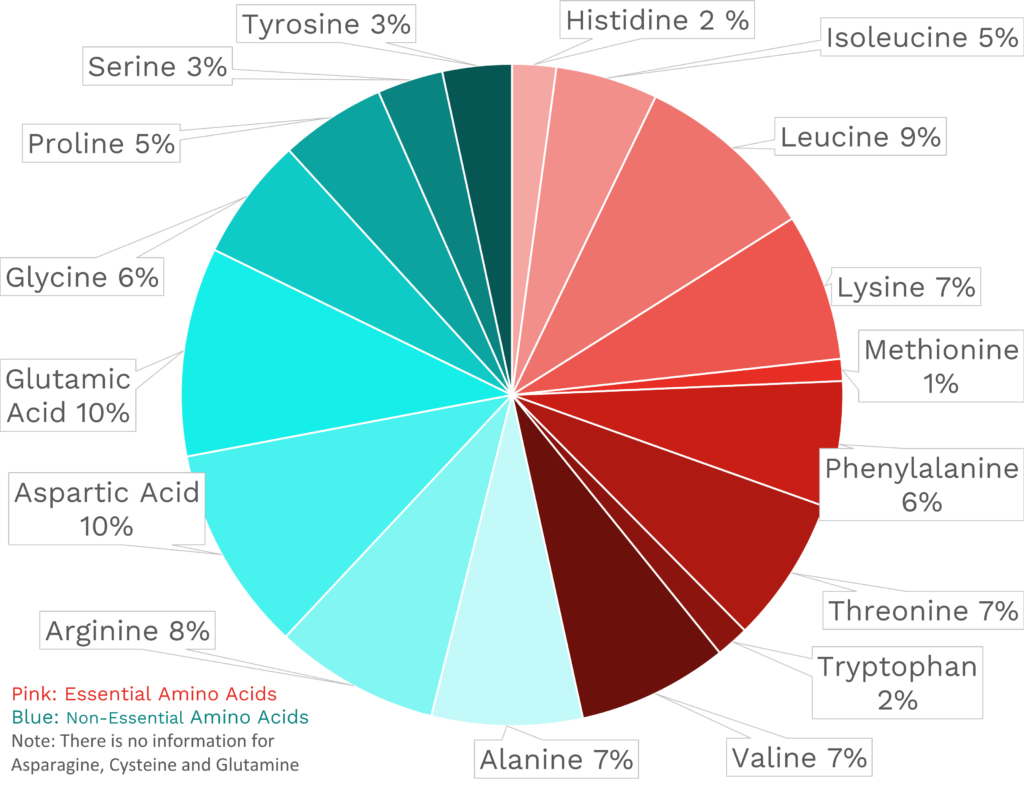
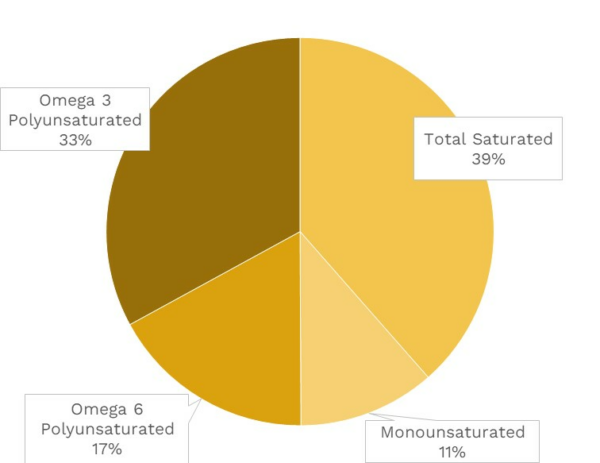
| VITAMINS | ||
|---|---|---|
| Vitamin A | 108.8 μg RAE | 12% DV |
| Vitamin B1 (Thiamin) | 61.2 μg | 5% DV |
| Vitamin B2 (Riboflavin) | 81.6 μg | 6% DV |
| Vitamin B3 (Niacin) | 0.1 mg | 1% DV |
| Vitamin B5 (Pantothenic Acid) | 0.2 mg | 4% DV |
| Vitamin B6 (Pyridoxine) | 87.7 μg | 5% DV |
| Vitamin B7 (Biotin) | 2.7 μg | 9% DV |
| Vitamin B9 (Folate) | 6.1 μg | 2% DV |
| Vitamin B12 (Cobalamin) | 0.0 μg | 0% DV |
| Vitamin C | 29.2 mg | 32% DV |
| Vitamin D (D2 + D3) | 0.0 μg | 0% DV |
| Vitamin E | 0.7 mg | 5% DV |
| Vitamin K | 170.0 μg | 142% DV |
| Choline | 6.1 mg | 1% DV |
| Myo-Inositol | 15.6 mg | ~ |
| CoQ10 | ~ | ~ |
| FUNCTIONAL FATS | ||
|---|---|---|
| MUFA | 0.0 g | 0% DV |
| ALA | 15.6 mg | 1% DV |
| EPA + DHA | 0.0 mg | 0% DV |
| CLA | ~ | ~ |
| Linoleic Acid | 0.0 g | 0% DV |
| MCT’s | 0.0 g | ~ |
| MINERALS | ||
|---|---|---|
| Calcium | 81.6 mg | 6% DV |
| Copper | 52.4 μg | 6% DV |
| Iodine | ~ | ~ |
| Iron | 0.1 mg | 1% DV |
| Magnesium | 14.3 mg | 3% DV |
| Manganese | 165.9 μg | 7% DV |
| Phosphorus | 40.8 mg | 3% DV |
| Potassium | 224.4 mg | 5% DV |
| Selenium | 0.6 μg | 1% DV |
| Sodium | ~ | ~ |
| Zinc | 0.1 mg | 1% DV |
| PHYTONUTRIENTS | ||
|---|---|---|
| Carotenoids | 5223.1 μg | ~ |
| Polyphenols | 710.0 mg | ~ |
| Phytosterols | 13.5 mg | ~ |
| Glucosinolates | 64.6 mg | ~ |
| Thiosulfinates | ~ | ~ |
| Betalains | ~ | ~ |
| AMINO ACIDS & PEPTIDES | ||
|---|---|---|
| Taurine | ~ | ~ |
| Ergothioneine | ~ | ~ |
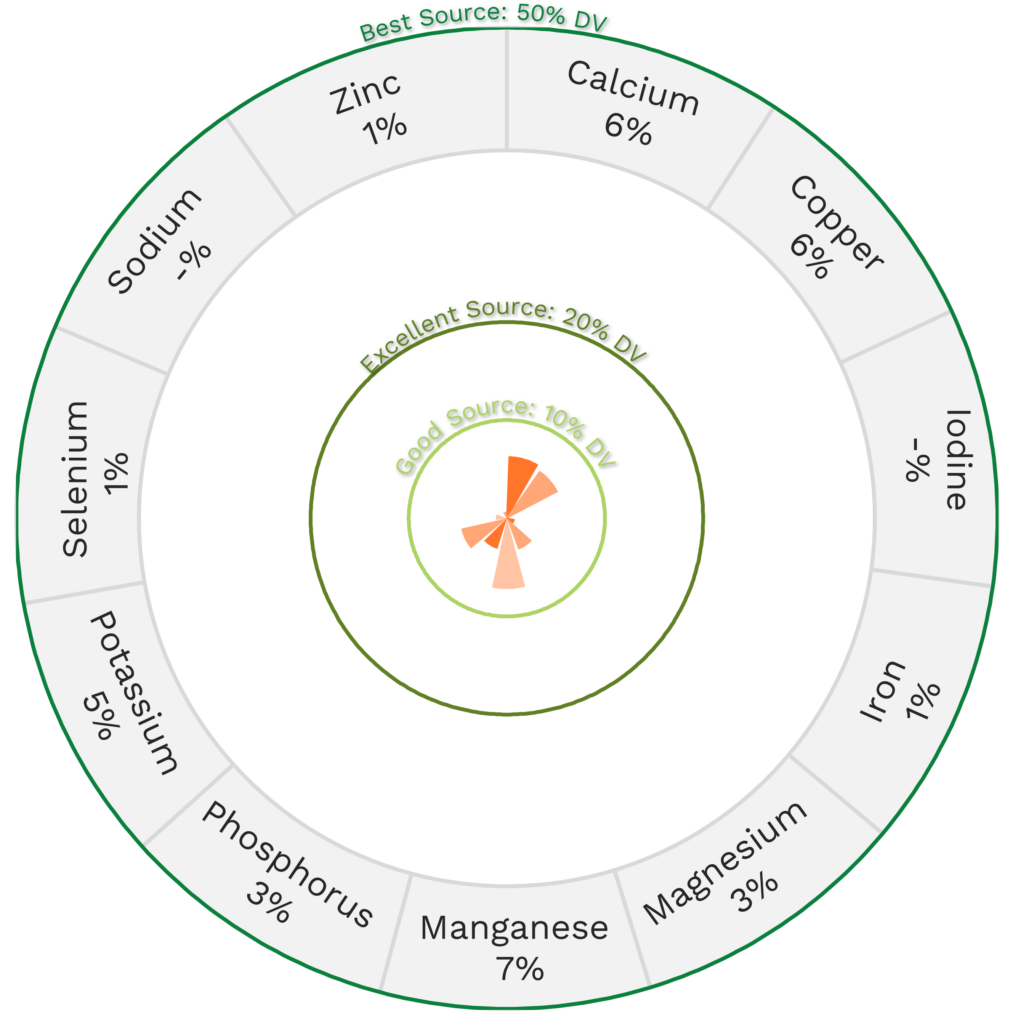
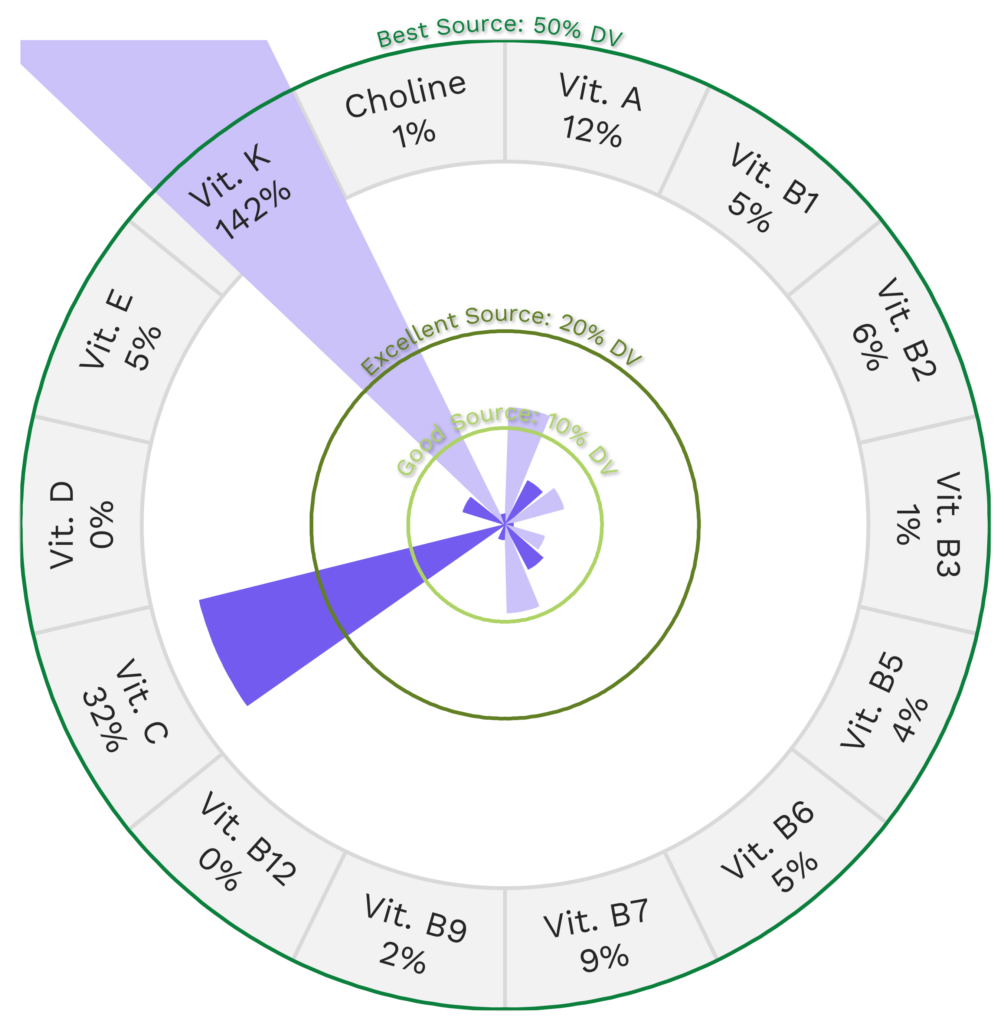
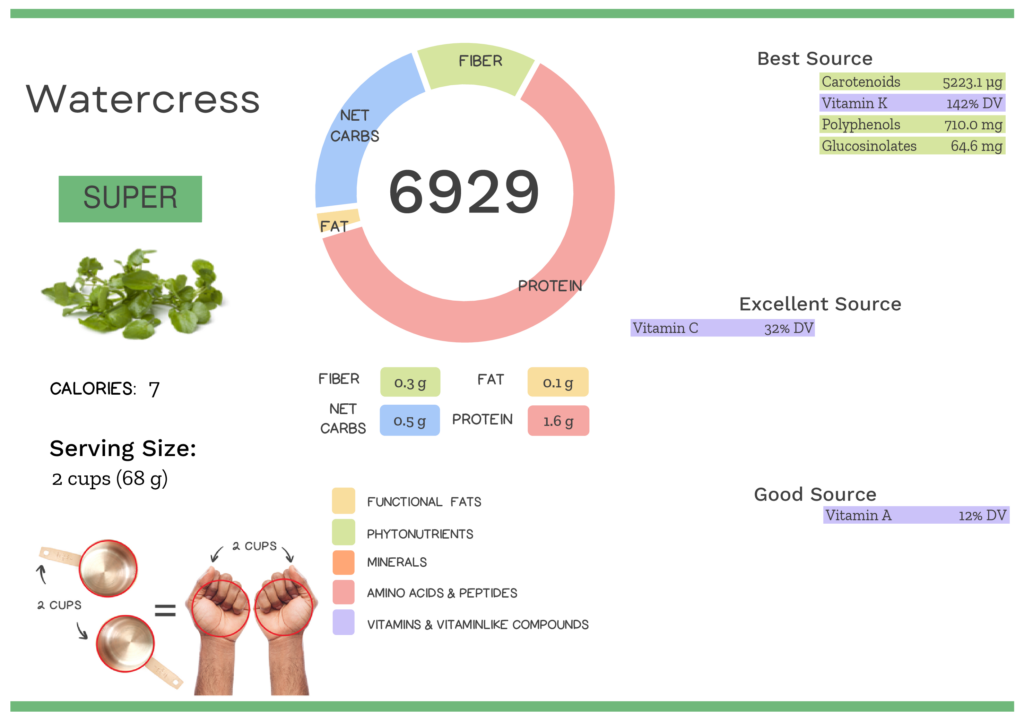
Impressed by the unbe-LEAF-able nutrition in watercress? Maybe your friends will be too!
Health Benefits of Watercress Nutrients
Let’s take a closer look at all of the best and excellent source of nutrients found in a 2-cup serving of watercress and see how they benefit our health.
Watercress Provides 142% DV Vitamin K
Watercress is a fantastic source of vitamin K, providing 142% of the daily value per 2-cup serving!
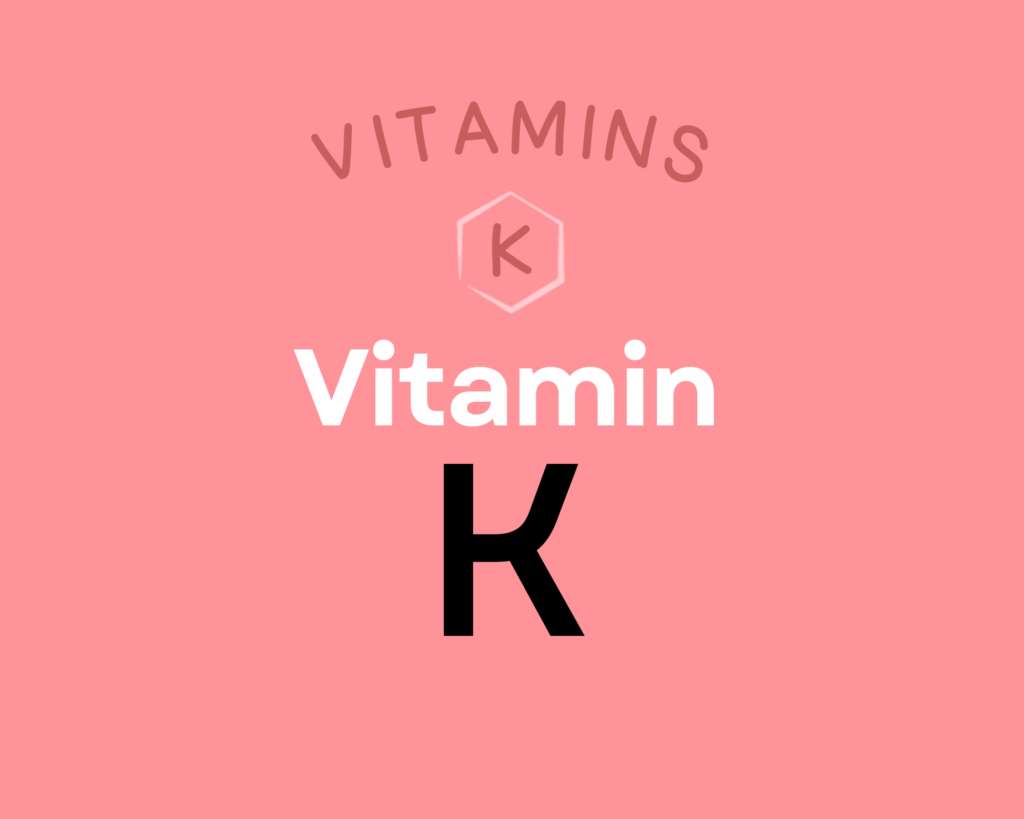
Vitamin K is actually a group of fat-soluble vitamins with a similar molecular structure, existing as K1, multiple isoforms of K2, and the synthetic form K3. This nutrient plays a vital role in coagulation, due to serving as a cofactor for proteins needed for blood clotting; it’s also essential for bone metabolism, cellular function, and the prevention of soft tissue calcification. Getting enough vitamin K2 can help protect against cardiovascular disease, may improve bone mineral density and skeletal health, and may even support endocrine function and brain health; there’s also some limited evidence it has anti-cancer and anti-inflammatory properties. Learn more about vitamin K here.
Watercress Provides 64.6 mg of Glucosinolates
Watercress is a best source of glucosinolates, providing 64.6 mg of glucosinolates per 2-cup serving!
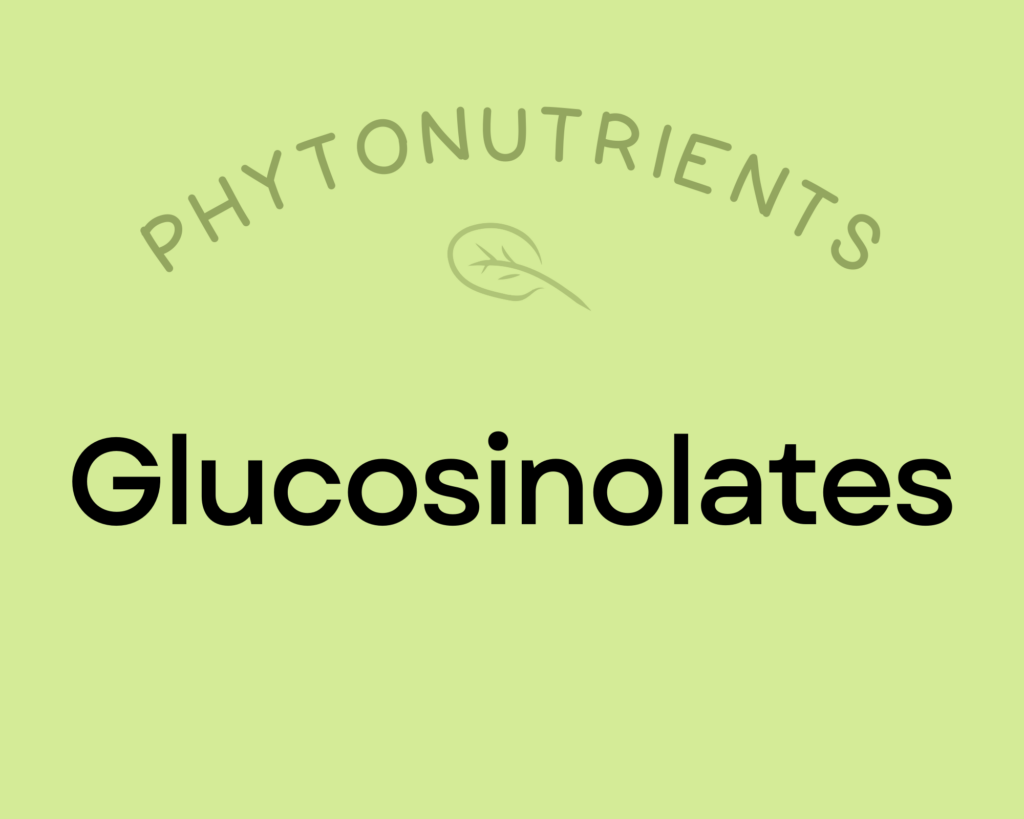
Glucosinolates are well-studied sulfur-containing compounds which break down into bioactive isothiocyanates and indoles when vegetables are damaged (via chewing, cutting, or other processing).
Isothiocyanates (like sulforaphane) are absolute rock stars as far as human health is concerned! Research spanning human epidemiology, animal models, and in vitro experiments show that dietary isothiocyanates are inversely associated with bladder cancer, lung cancer, colon cancer, breast cancer, and pancreatic cancer; some evidence also suggests they may be able to improve ventricular function following heart attacks.
Indoles also have powerful cancer prevention benefits through multiple mechanisms that include modulation of phases I and II detoxification enzymes, regulation of cell cycle arrest, control of cell growth, induction of apoptosis, antioxidant activity, anti-angiogenic effects, and epigenetic regulation. Indole-3-carbinol breaks down into 3,3′-Diindolylmethane (DIM), which is known for its anti-inflammatory, immune system modulating, cancer prevention and estrogen metabolism benefits.
Learn more about glucosinolates here.
Watercress Provides 710.0 mg of Polyphenols
Watercress is also a fantastic source of polyphenols, providing 710.0 mg of polyphenols per 2-cup serving!
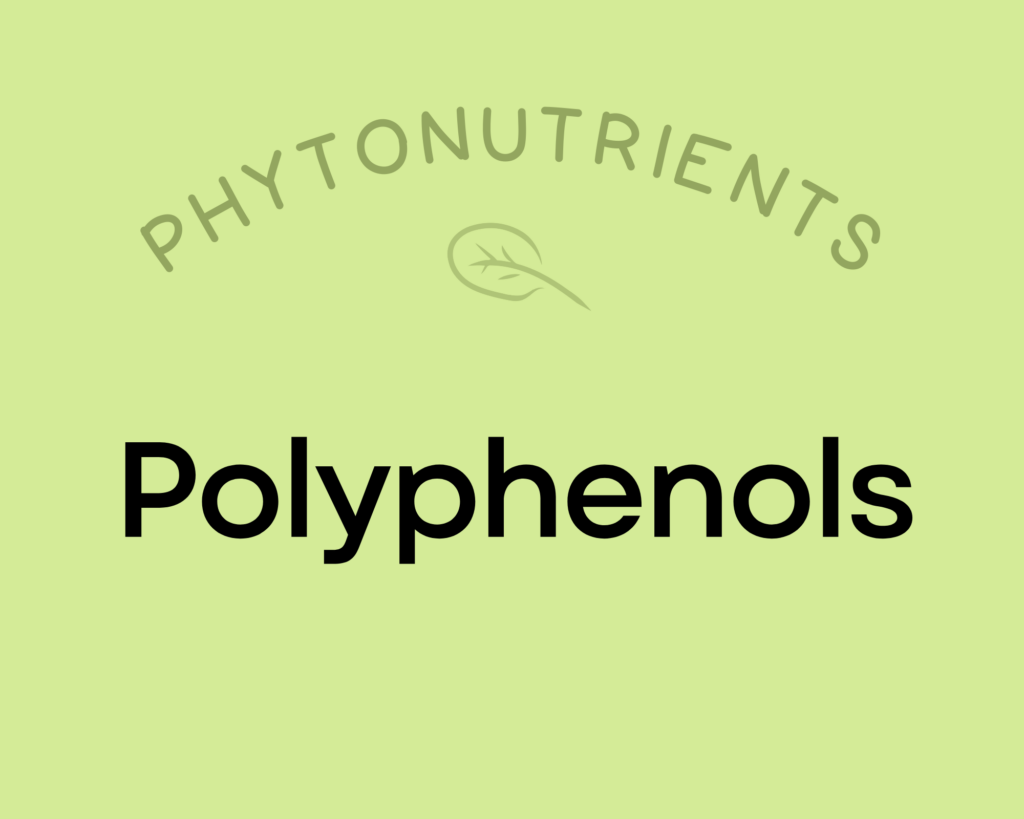
Polyphenols play a huge role in protecting against cancer, heart disease, diabetes, asthma, osteoporosis, neurodegenerative diseases, and other conditions associated with oxidative stress. In fact, a major reason foods like red wine and olive oil (as well as diets rich in both, such as the Mediterranean diet) show up as so beneficial may be due to their high polyphenol content! Along with chronic diseases, supplementing with polyphenols has been shown to protect against infections and reduce the signs of aging. Polyphenols exert their most potent effects by acting as antioxidants—preventing cellular damage by neutralizing hazardous oxygen radicals and improving cellular health as a result (which, in turn, benefits virtually every system in the body). As a result of their antioxidant properties, polyphenols also boost the immune system and protect against both chronic and acute diseases. In addition, polyphenols can help regulate enzyme function, stimulate cell receptors, modulate the functions of inflammatory cells (including T and B lymphocytes, macrophages, platelets, and natural killer cells), alter adhesion molecule expression, affect nerve cells and cardiac muscle cells, and exert antiviral effects. Learn more about polyphenols here.
Watercress Provides 5223.1 μg of Carotenoids
Watercress is a great source of carotenoids, providing 5223.1 μg of carotenoids per 2-cup serving!
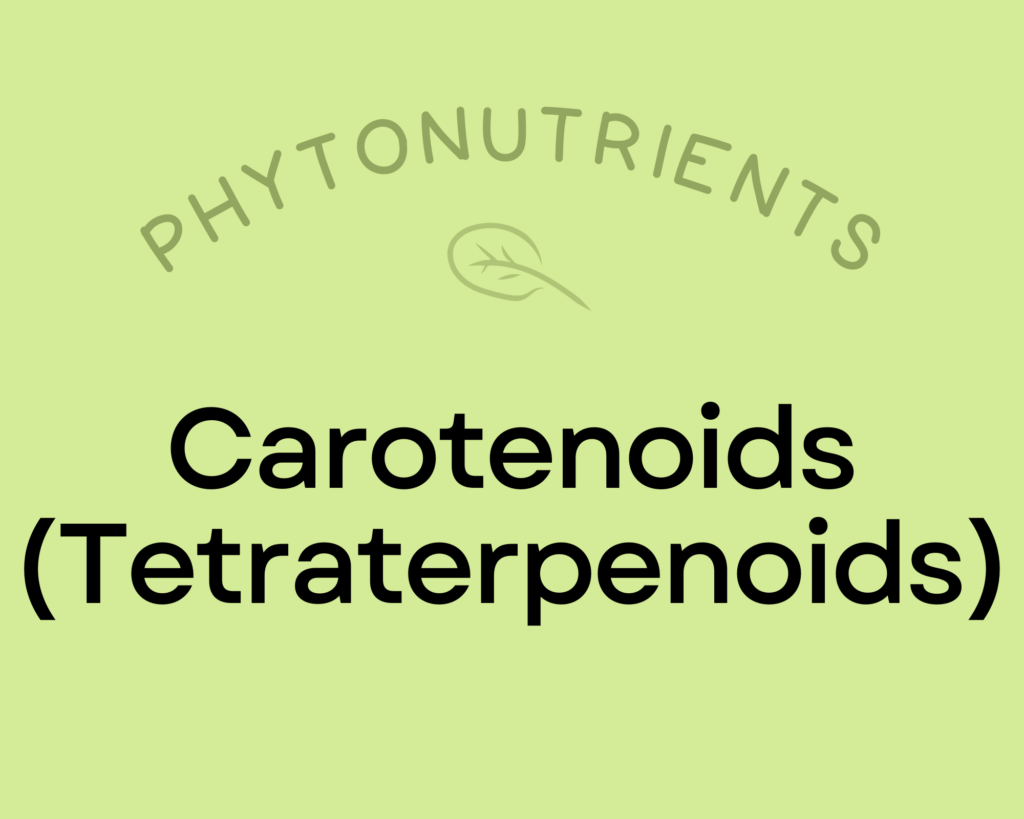
Carotenoids are a diverse group of phytonutrients that are responsible for giving fruits and vegetables vibrant red, orange, and yellow pigmentation. They were one of the earliest phytonutrients ever investigated by scientists (with research dating back to the 1800s!). Across studies, eating foods high in carotenoids appears to reduce the risk of head and neck cancers, supports vision health (particularly age-related eye diseases), may protect against metabolic syndrome and diabetes, and can reduce inflammation. Carotenoids have strong antioxidant properties, and help facilitate communication between cells by promoting the synthesis of connexin proteins, which create gap junctions in cell membranes that allow small molecules to be exchanged (which is part of how cells “talk” to each other!). Consuming carotenoids with fat significantly increases their absorption. Learn more about carotenoids here.
Watercress Provides 32% DV Vitamin C
Watercress is an excellent source of vitamin C, providing 32% of the daily value per 2-cup serving!
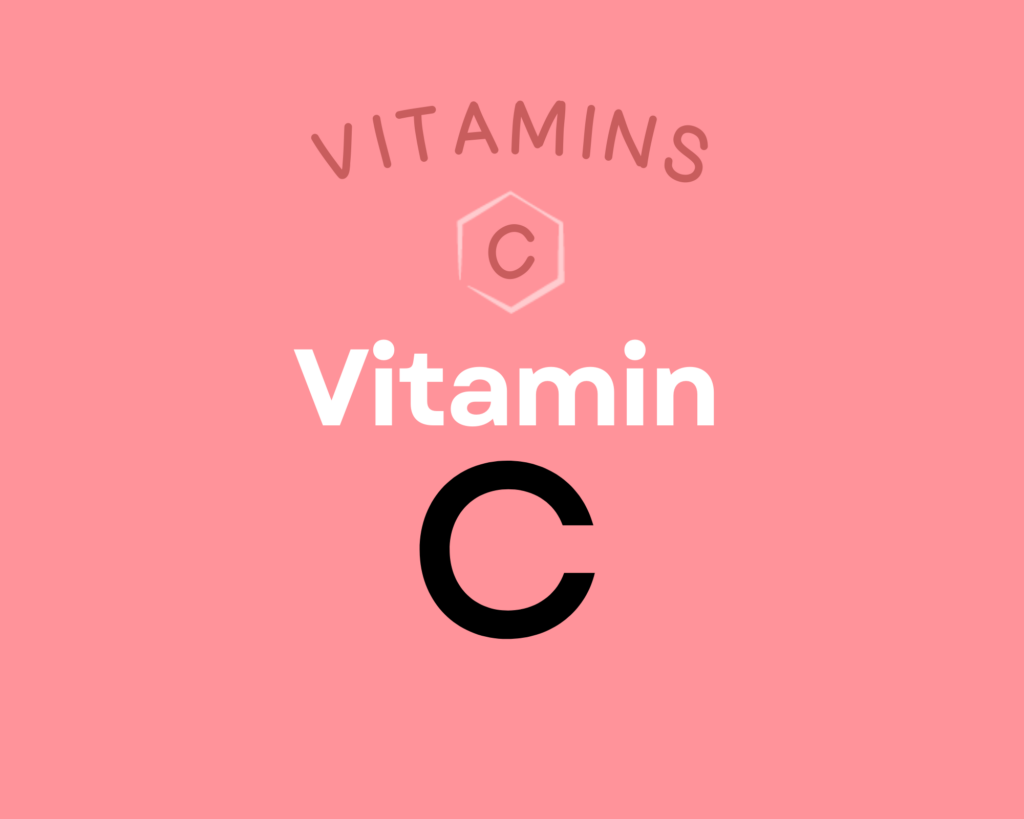
Vitamin C is a water-soluble vitamin that has powerful antioxidant properties (meaning it can help combat oxidative damage from free radicals and reactive oxygen species) and that serves as an enzyme cofactor (meaning it’s needed for enzymes to do their job, for example vitamin C is necessary for collagen synthesis, which is essential for bones, joints, teeth, blood vessels, skin and eyes) and playing important roles in immune system and skin health. Higher intakes of vitamin C are linked to reduced risk of heart disease, some forms of cancer, type 2 diabetes, cataracts, age-related macular degeneration, and gout. Vitamin C can also help regulate the stress response and reduce anxiety, and there’s preliminary evidence that it may also help prevent Alzheimer’s disease. Learn more about vitamin C here.
Learn What Foods Are the Best Sources of Every Nutrient

The Top 25 Foods for Every Nutrient
The Top 25 Foods for Every Nutrient e-book is a well-organized, easy-to-use, grocery store-friendly guide to help you choose foods that fit your needs of 43 important nutrients while creating a balanced nutrient-dense diet.
Get two “Top 25” food lists for each nutrient, plus you’ll find RDA charts for everyone, informative visuals, fun facts, serving sizes and the 58 foods that are Nutrient Super Stars!
Buy now for instant digital access.
How Much Watercress Should We Eat Per Day?
Watercress is a seriously under-rated and under-utilized veggie, which should not be reserved solely for traditional tea time!
Every serving of fresh, whole vegetables or fruit we eat daily reduces the risk of all-cause mortality by 5% to 8%, with the greatest risk reduction seen when we consume five or more servings per day. In fact, consuming 800 grams of vegetables and fruits daily reduces all-cause mortality by 31% compared to eating less than 40 grams daily. A 2017 meta-analysis showed that 2.24 million deaths from cardiovascular disease, 660,000 deaths from cancer, and 7.8 million deaths from all causes could be avoided globally each year if everyone consumed 800 grams of veggies and fruits every day.
Eating vegetables and fruit in abundance lowers risk of cancer, cardiovascular disease, type 2 diabetes, obesity, chronic kidney disease, osteoporosis and bone fragility fractures (including hip fracture), cognitive impairment and dementia (including Alzheimer’s disease), neurodegenerative diseases, asthma, allergies, chronic obstructive pulmonary disease, age-related macular degeneration, cataracts, glaucoma, depression, ulcerative colitis and Crohn’s disease, rheumatoid arthritis, inflammatory polyarthritis, non-alcoholic fatty liver disease, acne, seborrheic dermatitis, and lowers markers of inflammation. Learn more in Importance of Vegetables and Fruit.
Covering half of your plate with a variety of vegetables (and three quarters of your plate if your starchy food is a root vegetable or winter squash) at each meal is a simple way to easily achieve the goal of 5 or more servings of vegetables daily.
Studies show that, for every 100 grams of cruciferous veggies (like watercress), we eat daily, all-cause mortality decreases by 24%!
One to two servings per day of leafy greens is a great target, but there doesn’t seem to be any downside to consuming way more than that!
Studies also show that leafy greens (like watercress) offer a huge range of scientifically demonstrated health benefits. For instance, for every 1/3 cup of leafy greens you eat each day you reduce the risk of type 2 diabetes by 13%. Leafy green consumption has also been associated with a 40% lower risk of death from colorectal cancer in men, a 16% reduction in cardiovascular disease and slower cognitive decline in elderly adults. Amazingly, an average of only 1.3 servings per day was associated with the equivalent of being 11 years younger in cognitive age! Taking this all into account means that one to two servings per day of leafy greens (like watercress) is a great target, but there doesn’t seem to be any downside to consuming way more than that!
It’s always best to mix up the veggies you eat day to day (aiming for a wide variety of different vegetables and fruits throughout the week), and watercress definitely has a place at the table.
The Best Support to Build This Important Daily Habit!
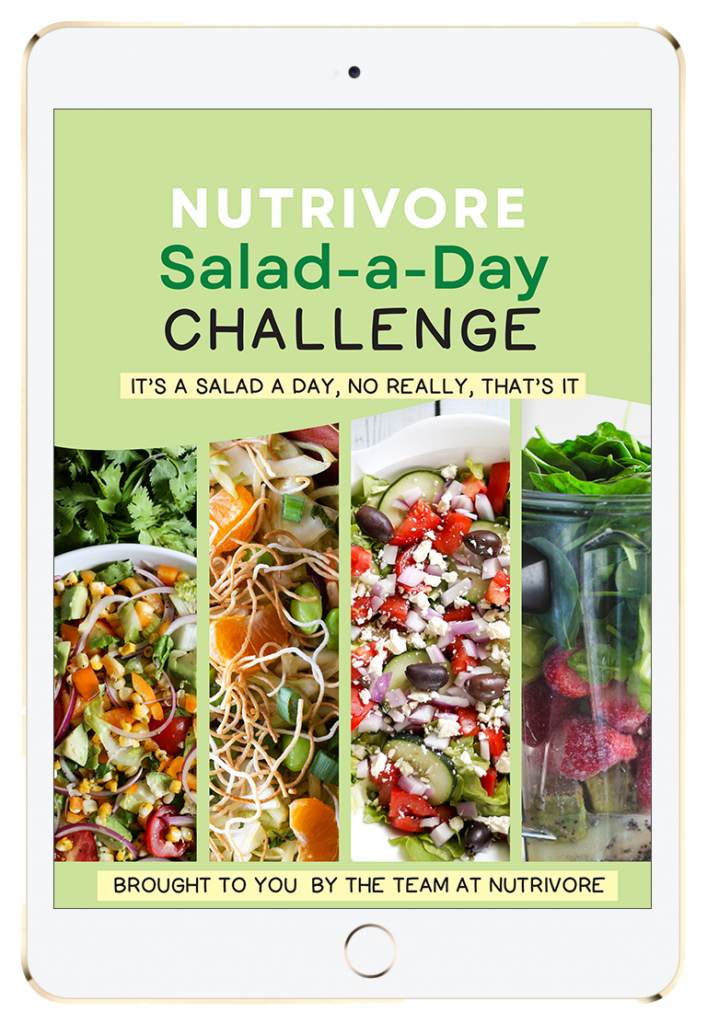
Nutrivore Salad-a-Day Challenge
The Nutrivore Salad-a-Day Challenge e-book explains all the ways a daily salad can improve your health, plus includes a collection of 10 handy visual guides and food lists, like the Nutrivore Salad Matrix.
Plus, you’ll find 50+ recipes, including over 30 of our favorite salad recipes plus recipes for delicious dressings and tasty toppers.
Buy now for instant digital access.
cITATIONS
Expand to see all scientific references for this article.
Boligon AA, Janovik V, Boligon AA, Pivetta CR, Pereira RP, da Rocha JBT, Athayde ML. HPLC Analysis of Polyphenolic Compounds and Antioxidant Activity in Nasturtium officinale. International Journal of Food Properties. 2013 16:1, 61-69. doi: 10.1080/10942912.2010.528111
Clements RS Jr, Darnell B. Myo-inositol content of common foods: development of a high-myo-inositol diet. Am J Clin Nutr. 1980 Sep;33(9):1954-67. doi: 10.1093/ajcn/33.9.1954. PMID: 7416064.
Fineli Finnish Food Composition Database: Garden Cress
McNaughton SA, Marks GC. Development of a food composition database for the estimation of dietary intakes of glucosinolates, the biologically active constituents of cruciferous vegetables. Br J Nutr. 2003 Sep;90(3):687-97. doi: 10.1079/bjn2003917. PMID: 13129476.
USDA Food Central Database: Watercress, raw
Watanabe T, Kioka M, Fukushima A, Morimoto M, Sawamura H. Biotin content table of select foods and biotin intake in Japanese. Int J Anal Bio-Sci. 2014. Vol 2(4):109-125.


